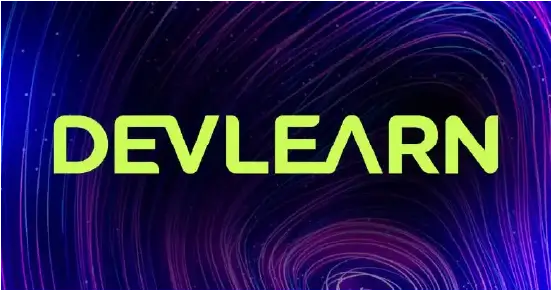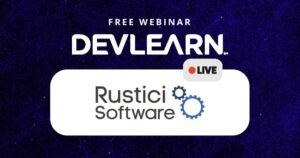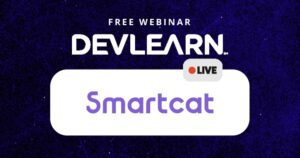Microlearning is still ambiguous to some, as it has been since it started trending. The more I talk and teach microlearning design principles, the more I see the disconnects on how its purpose and potential are perceived and its principles applied.
Part of the reason is that many want microlearning to be just a thing, a tangible item. The other part is that most who want to use microlearning want it to conform to what they already know about designing and creating training.
As I’ve discussed in previous articles, if there is no aim to drive performance with the use of microlearning, then my stance is that it’s not microlearning. It’s a mini course or a bite-sized piece of learning, but it is not microlearning. It’s just more of the same served up in a new way.
Adjusting to a new paradigm
This is how I used to think about designing instruction for the most part:
- Present the topic
- Tell the learner the objectives
- Present the information in a meaningful way
- Test the learner along the way to ensure they are “getting it”
It’s like reading a distilled version of Gagne’s 9 Events of Learning. The evaluation that goes along with this set-up is commonly built on two questions:
- Did the learner complete the training?
- Did the learner pass the test with a certain level of competency? For example, mastery is 80% or higher.
Very Level 2 (Learning) of Kirkpatrick. That raises a key question: Is learning performance?
If I had a higher word count, I might debate that point, but ultimately, no. Performance is an outcome of some, but not all, learning and repeated application of that knowledge. Performance requires knowledge and skills.
Our instructional design teachings, for many, brought us down a conceptual path of Bloom’s Taxonomy and designing for knowing, not performing. There’s a newer paradigm we should consider: Designing learning to develop or improve performance.
When I design for performance, I am focused on the concept of the learner valuing the information differently than just knowing: I need their learning to be actionable. I am designing for behavior—to change behavior.
We often see this discussed through trending topics such as performance improvement, upskilling, and reskilling. Which leads us back to microlearning because microlearning is often touted as a great way to make these competency-focused goals happen. This might require looking at microlearning differently, as a concept, method, or product.
Microlearning as a concept
Microlearning as a concept is about creating learning interventions that focus on honing skills and performance over time. This provides opportunities to compartmentalize facets of the skill to permit targeted practice while building upon that skill.
Consider the following
Should we expect an employee to be able to identify a microaggression because they were provided with a definition of what a microaggression is and a few examples of what one looks like during an annual compliance training?
We should be answering “No.” If anyone thought, “If they passed the test, then of course!” consider that all the employee did was test well on one assessment, immediately after completing the training.
Is that test score sufficient if the goal of your organization is trying to address an issue around DEI? Or if the company wants learning opportunities that teach skills that assist in embodying the company culture?
Microlearning is the concept of showing, not knowing.
Microlearning as a method
If the concept of what microlearning will do is understood, then how do we go about using that concept to bring out desired performance outcomes? What method works the best? As a method, microlearning provides focused content that develops competency over time with repetition.
Consider the following
Leaders did not start out handling issues of conflict perfectly from their first experience. Successful leaders have cultivated skills over time, through training and through application of those skills in real-world situations.
The idea that a leader should know how to resolve conflict doesn’t mean that an individual can show this skill. Even when a leader exhibits action toward resolving a conflict, that leader has not necessarily addressed the situation well.
Think of it this way: We all have methods for breaking habits or building new ones. We know the difficulties in achieving our goals and the need to develop a campaign that allows us to repeatedly reflect, practice, and evaluate to reach each one.
Microlearning is a method of repetition and incremental improvement over time, not one-and-done.
Microlearning as a product
With our concept and method in hand, what “thing” will we create to provide opportunity to reflect, practice, and evaluate? We have now arrived where many have placed microlearning—as a tangible item.
Consider the following
An organization emphasizes healthy habits, both physical and mental, for its employees. They formulate various campaigns (or initiatives) that focus on specific health needs. One campaign might focus on assisting diabetics, where another may concentrate on stress reduction.
With each example, we probably envision a program of sorts, one that provides content or information, activities, and events. We probably also agree that this campaign would fail if it did not have a targeted communication plan.
If we extend that thinking just a bit further, we also know that achieving our goal relies on seeing change in individuals and that this change will not be immediate. This means each individual needs to be able to benefit from the campaign and its products in a manner that will help them be successful.
Microlearning is not typically a single product, but a series of interrelated products called a campaign. Yes, a single product can have a campaign as well! Let’s take a look at the design of one.
Microlearning as a set of design principles
Changing behavior takes more than sharing information. Meaningful, contextualized, concise experiences provide an individual with opportunities to reflect, practice, and evaluate.
Consider the following
An in-person conference wants to ensure the safety and comfort of its attendees. The event provides each attendee a colored bracelet to help inform conference goers of each attendee’s preferences for interacting. Poster boards with the bracelet information are placed throughout the event. These boards offer:
- Reflection—Reviewing the meaning of each color and determining if choosing a color deters the attendee from interacting with certain people. Or perhaps recognizing that their color choice may be perceived by others as too risky and that this may limit interactions.
- Practice—At first, this helps attendees recall the interaction type that corresponds to each color and then act accordingly. This will be repeated until the action becomes more habitual. Given the duration of the conference or how often an attendee attempts to engage with others, the habit may not form at all.
- Evaluate—For each interaction, the individual assesses how the initial engagement happened. They may compare it to observations of how others interacted.
So, what was the microlearning product? The poster board. It’s meaningful, contextualized, and concise.
These are just a few of the microlearning design principles that I use to create microlearning that illustrates the idea that, to show something, you have to know it.
Concluding thoughts
Learning leaders thinking through the purpose and potential of using microlearning need to take into account that microlearning is not just a “thing” like eLearning. It’s also a way of altering performance through designing with the affective domain in mind.
This may not be how your L&D team is structured to provide services to your organization. Consider the following as you continue to explore maximizing microlearning:
- Is the concept of microlearning relatable to your organization’s needs? If the company is not focused on tying performance to organizational goals or KPIs, then microlearning as described here may not be relevant.
- Can your organization support this method of performance optimization? Resources, including technology, processes, people, time, and money, may not be readily available to support this approach. Recognize that time will be needed to build comprehension within the organization with key stakeholders to drive this initiative forward.
- Is your team skilled at performance-driven design? Alternatively, is your team structured to build learning products for “knowing” more than “showing”? Here is where I find my greatest challenges—and rewards—as I teach microlearning design principles.
Our L&D teams need time to adjust, not necessarily undo, what they know about designing instruction. They need to learn a new method for designing instruction. What makes it difficult is that when something is ambiguous, which microlearning can be to many, we tend to draw parallels to what we do know, or we associate it to something we are familiar with to make sense of it.
With designing microlearning, I have watched time and again as learning designers try make it fit their approach of designing for knowing. In my next article, we will examine how to flip knowing to showing.
Explore leadership issues with your peers
Explore the strategies and skills required to navigate the needs of today’s ever-changing workplace with your learning leadership peers. Join the Learning Leaders Alliance, a vendor-neutral global community for learning leaders who want to stay ahead of the curve and for aspiring leaders wanting to build their skillsets.
The Learning Guild’s Alliance Membership package includes access to exclusive digital events and content curated for today’s modern learning leader, as well as opportunities to attend in-person learning leadership events held around the globe.










